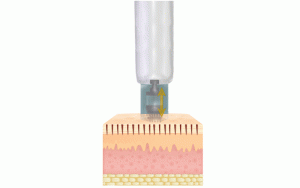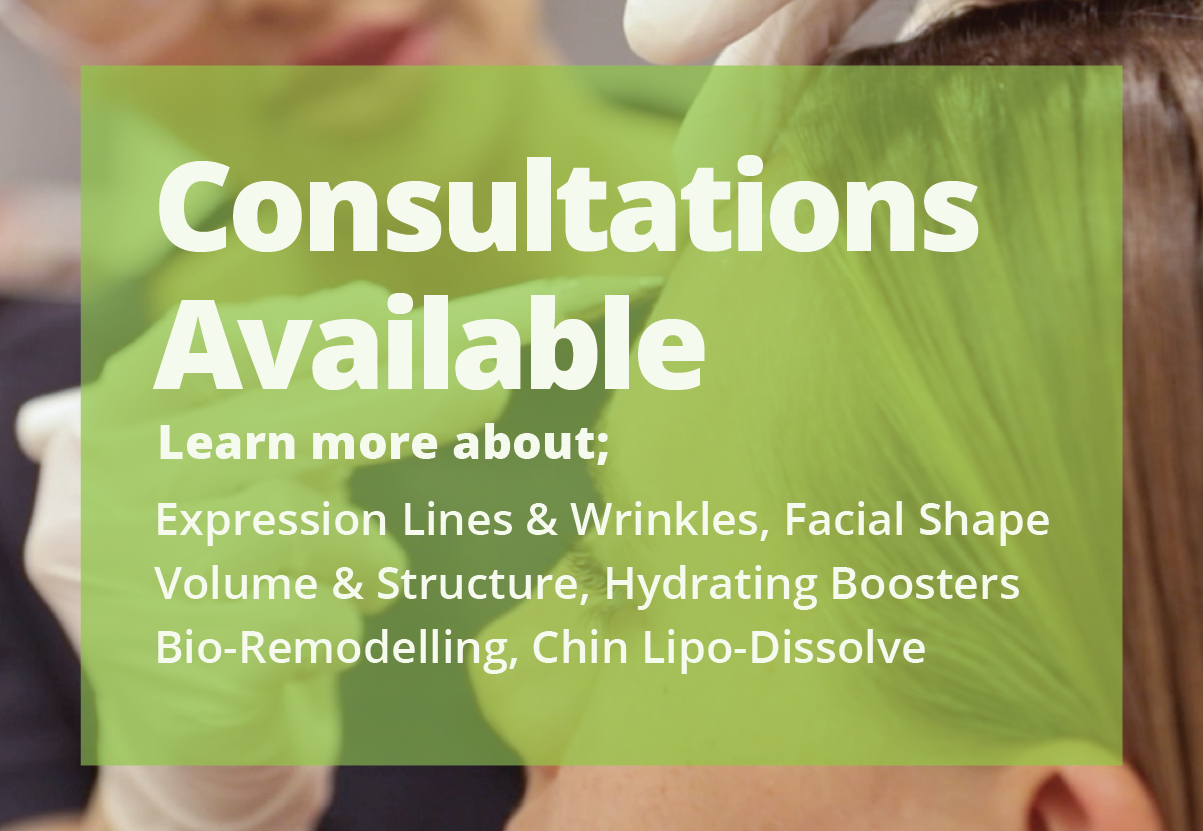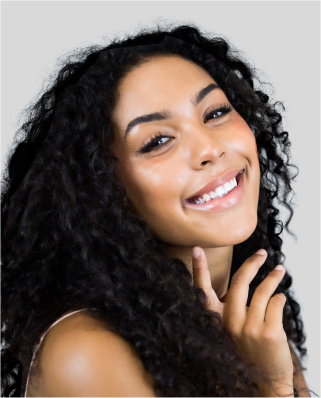Facelifts without surgery – do they work?
Get in touch with us
It’s hard to “un-see” the train-wreck of a face-lift-gone-wrong. Its even harder to credit the list of celebrities guilty of falling into the trap of permanently surprised eyebrows, mis-shapen eyes & smiles that would rival Heath Ledger’s Joker, in ‘The Dark Knight’.
Avoid the big price tags
Facelifts without surgery – do they work? A surgical price tag in the thousands puts that likelihood of surgical disaster beyond most of our reach but many of us would benefit from a subtle, tweak and tightening to help the battle with gravity, faced by our brows & jowls – that’s where Pollogen’s Tri-Lipo technology comes in. Non-surgical facelifts & eyelifts are affordable, highly effective & produce a natural, lift and tightening effect, without the surgeons, scars & downtime.
How does Facelifts without surgery ‘non-surgical facelifts’ work?
Radio Frequency (RF) heat is delivered from a hand-piece. This heats through the dermis, deep into subcutaneous layers of the skin. This starts to release fat cells.
While the hand-piece massages down on the skin, safe blasts of energy stimulate dynamic muscle activation (DMA), lifting the layer of muscle, squeezing the fat layer and releasing more fat cells.
Stimulate & harness the body’s metabolism
- Heat from the RF coupled with the massaging effect, accelerate natural lymphatic drainage, encouraging your body to metabolise & remove the fat naturally.
- Additionally, the RF heats collagen in the connective tissue, causing it to firm up, immediately smoothing & tightening the skin.
- At the same time the RF stimulates fibroblasts in the connective tissue to create more collagen, aiding longer-term regeneration & rejuvenation.
Immediate & longer lasting results
Results can be seen almost immediately but 4-6 treatments, at 2 to 4 weeks apart are recommended for a longer lasting effect – usually between six and twelve months, which can be topped-up with maintenance treatments, as required.
Cruelty free…tested on business owners!
Pollogen’s Tri-lipo technology is proven in 60 countries around the world & stars at Results Laser Clinic for a range of smoothing, tightening & sculpting techniques, ever since Results Laser Clinic’s founder & owner famously got on a plane, flying 18 hours to Pollogen’s Head Quarters, to trial the technology & returned raving about the results.

Read more on Non-Surgical Facelifts or Microdermabraision.
Next steps?
Results Laser Clinics is one of Australia’s most trusted providers of Laser Hair Removal, Skin treatments & Cosmetic Aesthetics Treatments. We are committed to delivering results that make you look & feel your best. Book your free Skin Analysis and complimentary consultation with our experts today! You can also save time and buy treatments from the comfort of your own home via a Results Online account! Our full-price list can be found here.
Skin Needling: Pen vs. Roller, which is best?
Get in touch with us
Which is better when it comes to Skin Needling: Pen vs. Roller? Discover the differences, benefits, and which option is best for your skin.
What is skin needling?
Skin Needling is rising in popularity for those in pursuit of the perfect skin. This skin resurfacing treatment is effective on uneven skin, scarring & age lines alike. The needling part refers to the tiny surgical needles, which are used to lightly puncture the skin, breaking down bumps, scar tissue & age lines. This process stimulates the body’s natural healing processes including the natural production of new collagen. The result is a new, smoother skin surface.
Skin Needling: Pen vs. Roller. But what holds the needles you ask?
There are two technologies: The DERMAL ROLLER is a mechanical device with surgical Micro Needles protruding from a wheel. This is rolled up and down the affected area. The upside is the simplicity, the downside is that it can create ‘tearing’ wounds, as the roller moves forward, leading the needle to exit the skin at an angle, which can be quite painful.
The NEEDLING PEN contains surgical micro needles, on a motorised head. Rather rather than using a rolling action, the Dermapen moves the needles in and out at a rate of about 1000 times per second, delivering tiny vertical punctures, creating less trauma to the epidermis. The head can be adjusted to vary the depth to which the needles penetrate the skin.

Where do I get Clinical Skin Needling?
Results Laser Clinic uses the Needling Pen at their 40 clinics nationwide. All treatments are performed by our expert therapists. Book a free, no-commitment consultation, to find out more & whether Skin Needling will help achieve the goals you’ve set for your skin.
Resurface & Repair your skin
Skin Needling can help improve skin texture & reduce the size of open pores, in just one treatment. 4-6 treatments are usually needed for severe acne scarring or age lines. Spring is a perfect time to craft your look for the summer & parties ahead.
Your Next Step
Results Laser Clinics is one of Australia’s most trusted provider of Laser Hair Removal, Skin treatments & Cosmetic Aesthetic Treatments. We are committed to delivering results that make you look & feel your best. Save time and buy treatments from the comfort of your own home via a Results Online account! You can also book a complimentary consultation online! Or, see our full price list here.
Taking beauty advice from vampires? – Skin Needling Benefits
Get in touch with us
We were all intrigued when KK posted this Instagram photo.
And even more so when she denounced it as painful over three years later. I mean, who would want a facial where you are stabbed with tiny needles full of your own blood? Well there are quite a few Skin Needling Benefits! So what is the fuss all about?
Why skin needling?
This affordable treatment can be used to treat a wide variety of skin concerns; it tackles pitted scaring, surgical scars, un-even skin tones, enlarged pores, fine lines and wrinkles. It also stimulates your natural collagen leaving you with a smoother, rejuvenated and younger look after each treatment at a fraction of the cost compared to other technologies on the market.
With consistent treatments, you will notice a significant reduction in pores, reduction or complete removal of pitted scaring and an overall more even skin tone. On average, scars can improve about 10-15% after your first treatment.
Skin Needling Benefits:
- Helps to restore your skin’s natural firmness and tightness
- Reduces depth of indented acne or chicken pox scars
- Improves skin texture and reduces pore size
- Lightens pigmentation marks and brightens skin tone
- Improves fine lines, folds and wrinkles
- Thickens the dermis and enhances dermal solidity
How does skin needling work?
Clinical Skin Needling works by lightly puncturing the skin with tiny medical needles through a motorised head. It is by far the most exciting treatment available on the market today, and Results Laser Clinic’s MediPro DermaPen is so advanced, that the depth of the needles can be adjusted in order to tailor a treatment specific to your needs.
It can even be used in those delicate and difficult areas such as around the lips, eyes and even on the nose. We love how instant the results are and we guarantee that you will love them too!
Can I have skin needling?
The best part about Clinical Skin Needling is that it works on almost all skin colours and types. Some treatments carry the risk of hyperpigmentation, especially in darker skins.
A FREE consultation with a clinical therapist will give you a better understanding of your suitability for the treatment. More often than not, if you have indented scaring, uneven skin surface or enlarged pores – you are the perfect candidate for the treatment.
Will it hurt like a vampire bite?
No. It is virtually painless! Our clinical therapists use a medical grade numbing cream on the skin’s surface about 30 minutes before treatment in order to make the experience as pleasant as possible. The sensation can be described as a fast, light vibration with slight flicks to the skin as the pen rolls over the area.
Not everyone will bleed, it just depends on how your skin responds to the needles and our therapists will only take the needle as far as your skin can handle. Bleeding does not mean better results.
How much recovery time will I need?
Usually redness and inflammation on the skin settles within hours of treatment and most clients will see their skin return to normal within 12-24 hours. To accelerate the healing process and also maximize the results of the Skin Needling treatment we recommend adding on an LED Advanced Light Therapy.
What are the normal side effects?
Skin may appear slight scratched and swollen within first 24hrs; pin prick bruising may also occur but will gradually subside over the 24-48hours.
It’s very normal for your skin to break out after the treatment as the skin is expelling toxins from beneath the surface.
It’s important to follow the aftercare given to you by our therapists.
#needling TIP
Avoid touching your face, sleep on a fresh pillow case, clean your mobile screen and also if you are applying makeup avoid within 24 hours and ensure your brushes have been thoroughly cleaned.
Your Next Step
If you like Skin Needling Benefits and think Skin Needling is something your skin could benefit from, it’s just a click away! Book your free Skin Analysis with our experts today! Book a free consultation – no commitment! Results Laser Clinics is one of Australia’s most trusted provider of Laser Hair Removal, Skin treatments & Cosmetic Treatments. We are committed to delivering results that make you look & feel your best. Save time and buy treatments from the comfort of your own home via a Results Online account! You can also book a complimentary consultation online! See our full price list here.
Chemical Peels Prices
Get in touch with us
At Results Laser Clinic NSW QLD and VIC, quality is not compromised by the low Chemical Peels Prices of our treatments. The products used for chemical facial peel treatments are dermatologically tested and amongst the leading brands nationally.
Results Laser Clinic therapists are also dedicated to delivering optimal skin health through education and professional recommendations. You can buy treatments and check Chemical Peels Prices online or in store!
What are Chemical Peels?
A Chemical Peel is a clinical technique that applies a safe chemical solution to the skins surface. The peel penetrates into the layers of the skin and target cells that cause a variety of conditions. Our Mandelic Peel is specifically designed for darker skin to correct pigmentation, blemishes, acne, scarring and aging skin.
Chemical Peel options include;
Acne Peel: A powerful blend of ingredients that effectively treats acne prone skin.
Clarifies and decongests the skin’s complexion. Brings blemishes under control and reduces the risk of future breakouts.
White Peel: A brightening peel that treats sun damage, hyperpigmentation and dull, uneven skin. Keeps melanin production under control. Visibly fades pigmentation for a more even and radiant complexion.
Photo Age Peel: A powerful blend of ingredients that helps to promote collagen production to reduce the appearance of fine lines and wrinkles. Helps to stimulate collagen and elastin, leaving the skin hydrated and rejuvenated.
Mandelic Peel: The peel penetrates into the layers of the skin and target cells that cause a variety of conditions. Our Mandelic Peel is specifically designed for darker skin to correct pigmentation, blemishes, acne, scarring and aging skin.
Skin Care Glossary
Get in touch with us
A Skin Care glossary of skin terms to help recognise your skin priorities and concerns. Use the Skin care glossary to help you understand some of the words on our blogs or website.
Acne: Localised inflammation of the skin as a result of hyperactive sebaceous glands at the base of the hair follicle.
Acne Rosacea: A skin disorder which results from chronic inflammataion of the cheeks, nose, chin, forehead, and/or eyelids. Often associated with increased redness or acne-like eruptions in these locations of the face.
Acne Vulgaris: Acne resulting from the bacterial infection of cysts deep within the skin. Without treatment this condition may result in scarring.
Age Spots: Brown spots found on the skin which are visible evidence of accumulated long term sun damage. Also called “liver spots.”
Alcohols: Alcohols may be drying or lubricating to the skin. They may range from clear liquids to waxy solids. May be used as emollients, humectants, lubricants, emulsifiers.
Allergy: An allergy occurs when the body creates histamines to fight a harmless substance when it may seem to be a threat.
Alpha Hydroxy Acids (AHA): Acids derived from fruit and milk sugars and used in certain creams and lotions. Alpha Hydroxy Acids are believed to reduce spots, wrinkles, and other signs of aging, sun-damaged skin.
Anti-Inflammatory: An ingredient which works against inflammation such as swelling, redness or blistering.
Androgens: Hormones that are present in both males and females. These hormones stimulate sebaceous glands to produce sebum and can contribute to worsening of acne. They are responsible for physical maturation in males and therefore occur in much higher levels in males
CLICK FOR MORE SKIN CARE GLOSSARY
Biocompatible: The ability of a substance to interact with the body without harmful effects
Botox® Cosmetic (Botulinum Toxin Type A): A purified protein produced by the clostridium botulinum bacteria, which reduces the activity of muscles that can cause frown lines.
Chemical peeling: The application of a chemical solution to improve and smooth the texture of the facial skin by removing its damaged outer layers. Phenol, trichloroacetic acid (TCA) and alpha-hydroxy acids (AHAs) are often used for this purpose.
Collagen: The major fibers of protein found in connective tissue, cartilage and bone.
Commissures: Corners or angles of the lips or eye.
Cryotherapy: The use of cold for treatment of a condition.
Cyst: A sac containing liquid or semisolid material usually in the dermis.
Cystic Acne: A form of acne resulting from the bacterial infection of cysts deep within the skin generally requiring treatment with antibiotics. May result in scarring.
Comedone: A mass of solidified sebum, blackened by oxidation, clogging the follicle.
Congestion: Excessive internal buildup. This prevents the skin from functioning properly.
Corynebacterium: Bacterial organism associated with acne in sebaceous follicles.
Cosmetic: According to the original 1938 legal definition, cosmetics are: “(1) articles intended to be rubbed, poured, sprinkled or otherwise applied to the human body or any part thereof for cleansing, beautifying, promoting attractiveness or altering the appearance and, (2) articles intended for use as a component of any such articles; except that such term shall not include soap.”
Cyst: Large raised and swollen skin disorder formed when several impacted follicles break down and merge together.
Dermabrasion: A procedure performed with a special instrument to smooth the skin’s surface. The procedure removes the upper layers of skin and improve irregularities in the skin surface, such as acne scars or chicken pox marks.
Dermal: Relating to the skin or dermis.
Dermal Filler: A substance injected into the skin to restore volume to the skin and smooth out facial wrinkles.
Dermatitis: Inflammation of the skin.
Dermis: The “middle portion” of the skin and its support structure, containing nerves, blood vessels, oil glands, and hair follicles.
Decongestant: To diminish and break down unwanted deposits within the skin.
Dehydration: A common esthetic condition in which the skin has a tissue paper-like appearance with superficial lining which is caused by external factors.
Distended Capillaries: An expansion of the circulatory system caused by dietary intake, physical, mental or environmental abuse producing an overly red appearance to the skin.
Eczema: A form of dermatitis occurring as a reaction to many internal and external agents. Characterized by erythema, inflammation, crusting, scaling, and/or hyperpigmentation.
Elastin: A protein in the middle layer of the skin that helps maintain resilience and elasticity.
Epidermis: The outermost layer of the skin.
Erythema: Redness of the skin produced by congestion of the capillaries resulting from a variety of causes.
Evening Primrose: Used as an astringent and helpful for reducing skin irritation. Also beneficial for dehydrated skin.
Fitzpatrick Skin Types: A scale that divides skin into six different types.
– Type 1: White skin that never tans and always burns easily.
– Type 2: White skin that tans slightly and always burns easily.
– Type 3: Light brown skin that tans gradually and can burn moderately.
– Type 4: Moderately brown skin that tans well and burns slightly.
– Type 5: Dark brown skin that tans profusely and burns rarely.
– Type 6: Black skin with deep pigmentation that never burns.
Follicle: The tiny shaft in the skin through which hair grows, and sebum is excreted from the sebaceous glands to the surface of the skin.
Free Radicals: Free radicals damage the cells lipids, DNA and proteins free radicals are generated by UV exposure, pollution & smoking.
Glabellar Creases (Lines): Creases in the forehead between the brows. Also called “frown lines.”
Glycolic Acid: A member of the Alpha Hydroxy Acid (AHA) family, is a sugar cane extract which has the ability to dissolve the stratum corneum and smooth thickened skin reducing fine lines an wrinkles and correcting acne.
Hemangiomas: A reddish-purple birthmark, also known as “port wine stains.” Hyaluronic Acid: A substance found in the connective tissue of the body that cushions and lubricates. Hyaluronic acid also creates volume in the skin.
Hyperpigmentation: A lack of skin color caused by a deficiency of melanin production or a loss of pre-existing melanin or melanocytes.
Inflammatory: “Causing inflammation,” usually used to describe lesions that are inflamed by chemical reactions or bacteria clogged follicles.
Keloid: Sharply elevated, irregularly shaped, progressively enlarging scar due to formation of excessive amounts of collagen during the healing process.
Keratin: A protein that is a primary constituent of hair, nails, and skin.
Laser: A device that concentrates high amounts of energy into a beam of radiation.
Laugh Lines: A loss of volume in fatty tissue between the mouth and cheeks that creates lines or ridges.
Lipid: Oily substances that include fats, waxes, and oils. Primary ingredients of sebum. Free fatty acids can be irritating to the skin.
Marionette Lines: Lines going down from either side of the mouth. Also known as “oral commissures.”
Melanin: Dark brown or black pigment of the skin. Melanocyte: Skin cells that synthesize melanin pigment.
Melanoma: Tumor arising from the melanocytic system of the skin and organs. Melasma: Tan or brown pigmentation, generally located on the forehead, cheeks, and nose associated with pregnancy and oral contraceptives.
Melasma: Tan or brown pigmentation, generally located on the forehead, cheeks, and nose associated with pregnancy and oral contraceptives.
Microdermabrasion: The use of tiny particles which are blown against the skin to remove the damaged or aging outer layer and to stimulate the growth of new cells.
Milia: “Whiteheads;” Keratin plugs sometimes seen in patients post laser.
Melanin: A brown pigment produced by pigment producing skin cells (melanocytes). Increased amount of melanin pigment results in a tanned hue following exposure to UV light.
Non-steroidal: Not containing steroids, the family of chemical substances found in many hormones, body constituents, and drugs.
Oral Commissures: Lines going down from either side of the mouth. Also known as “Marionette Lines.”
Papule: Small circumscribed, superficial, solid elevation of the skin. Perioral Lines: The lines on the upper lips, also referred to as “smoker’s lines.”
Periorbital Lines: The lines and wrinkles around the eyes, also known as “crow’s feet.”
pH: The value used to indicate acidity and alkalinity. The pH scale ranges from 0 to 7, with 0 indicating potent acidity, 7 indicating a more alkaline reading, and 3.5 being neutral.
Photoaging: Damage from sun exposure over time, especially skin wrinkles.
Pigmentation: Coloration of the skin determined by melanin production within the melanocytes. Post Inflammatory
Hyperpigmentation: The residual discoloration left after an underlying skin disease or condition has healed. Psoriasis: A chronic dermatosis characterized by micro-abscesses and pustules.
Restylane®: A dermal filler that restores volume to the skin, giving a smoother, more youthful appearance.
Retinoids: Any of a group of natural or human-made substances similar to Vitamin A.
Retinoic Acid: Vitamin A acid typically used in products for the treatment of acne, and certain signs of photo damage.
Salicylic Acid: A member of the Beta Hydroxy Acid family and a lipid soluble agent used for epidermal exfoliation. Also, has anti-inflammatory properties that minimize stinging and irritation making it good treatment for acne, rosacea, and melasma.
Sebaceous Gland: A gland in the skin that produces an oily substance called sebum, that slows evaporation of water and protects against bacteria. Gland of the skin which empties an oily secretion into the hair follicle.
Seborrhea: Increased discharge of sebaceous matter upon the skin.
Seborrheic Dermatitis: Inflammatory skin rash resulting from hyperactive sebaceous glands in the skin. Sebum: The oily substance produced by sebaceous glands, which is implicated in acne.
Skin: The protective covering of the body. Smile Lines: Lines appearing on the cheeks.
Skin Care Glossary: a list of words and their meanings.
Solar Lentigo: A spot on the skin resembling a freckle, except that its border is more regular, and it contains more melanin pigment. Also known as “age spots” or “liver spots.”
Sun Protection Factor (SPF): How many times longer a person wearing sunscreen can stay in the sun before beginning to burn than they would without any sunscreen at all.
Scarring: This condition is the result of trauma to the skin resulting in irregular tissue formation and should be noted on the facial zone chart.
Stratum Corneum: Outermost layer of dead cells in the epidermis which protects living tissue from external stimuli and forms a barrier to keep moisture in.
Sun Damage: Redness, flaking and pain are the indications of over-exposure to the sun’s damaging rays which can result in sunburn, a variety of skin eruptions, irregular pigmentation, premature aging and possibly skin cancer.
Tissue: A group or collection of similar cells that perform a particular function.
Vitiligo: Skin disorder characterized by patches of non-pigmented whte patches varying in size.
Worry Lines: The horizontal lines that appear in the forehead, also referred to as “brow lines.”
Treatments for Stretch Marks
Get in touch with us
A stretch mark is formed when the dermis or surface layer of skin tears, scarring with a light coloured hue. This pulling force occurs from factors such as rapid growth or weight gain and diminishing dermal elasticity. Stretch marks are also known as striae, lineae atrphicae and striae cutis distensae. Here are Treatments for Stretch Marks.
Results Laser Clinic provides a number of treatments and technologies for Stretch marks. This includes the most advanced, medically- graded Fractional RF. More importantly, therapists cater to individual needs and budget by providing an honest and realistic outcome in the consultation. When discussing treatment options with a therapist, clients are advised of their suitability for the treatment, costs and benefits.
Next steps?
Already tried the above treatments and ready to take it to the next level? Results Laser Clinics. We are one of Australia’s most trusted providers of Laser Hair Removal, Skin treatments & Cosmetic Aesthetics Treatments. We are committed to delivering results that make you look & feel your best. Book your free Skin Analysis and complimentary consultation with our experts today! You can also save time and buy treatments from the comfort of your own home via a Results Online account! Our full-price list can be found here.





















